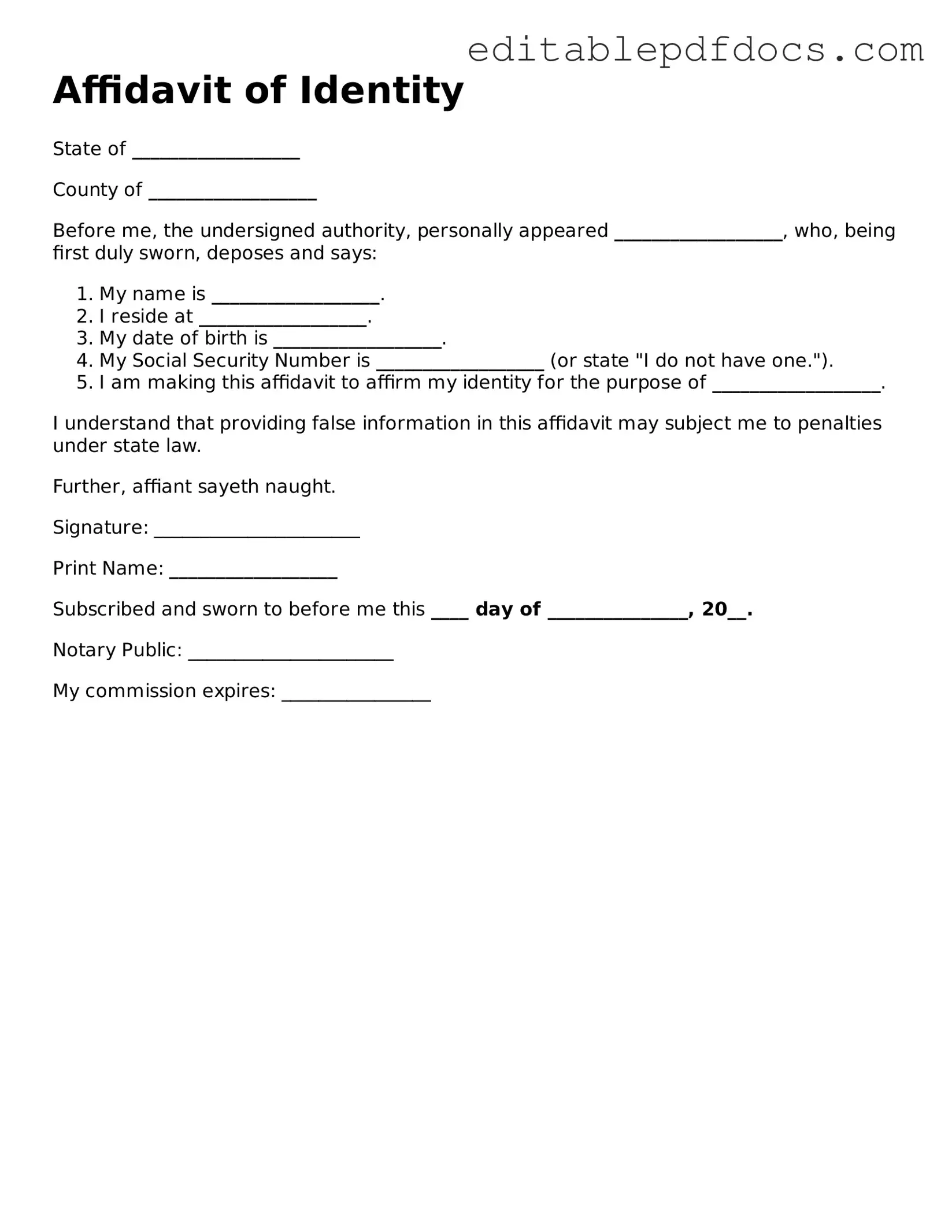The Affidavit of Identity form serves as a crucial document in various legal processes, ensuring that individuals can confirm their identity when required. This form is often utilized in situations such as applying for a passport, securing a loan, or verifying identity in court proceedings. It typically requires the individual to provide personal information, including their full name, date of birth, and current address. Additionally, the form may necessitate the signature of a notary public to validate the affidavit, adding an extra layer of authenticity. By completing this document, individuals affirm that the information provided is accurate and truthful, which is essential in maintaining the integrity of legal transactions. Understanding the importance of the Affidavit of Identity form can help individuals navigate situations where identity verification is necessary, ensuring compliance with legal requirements and protecting personal interests.
